A Generation Of
School Closings
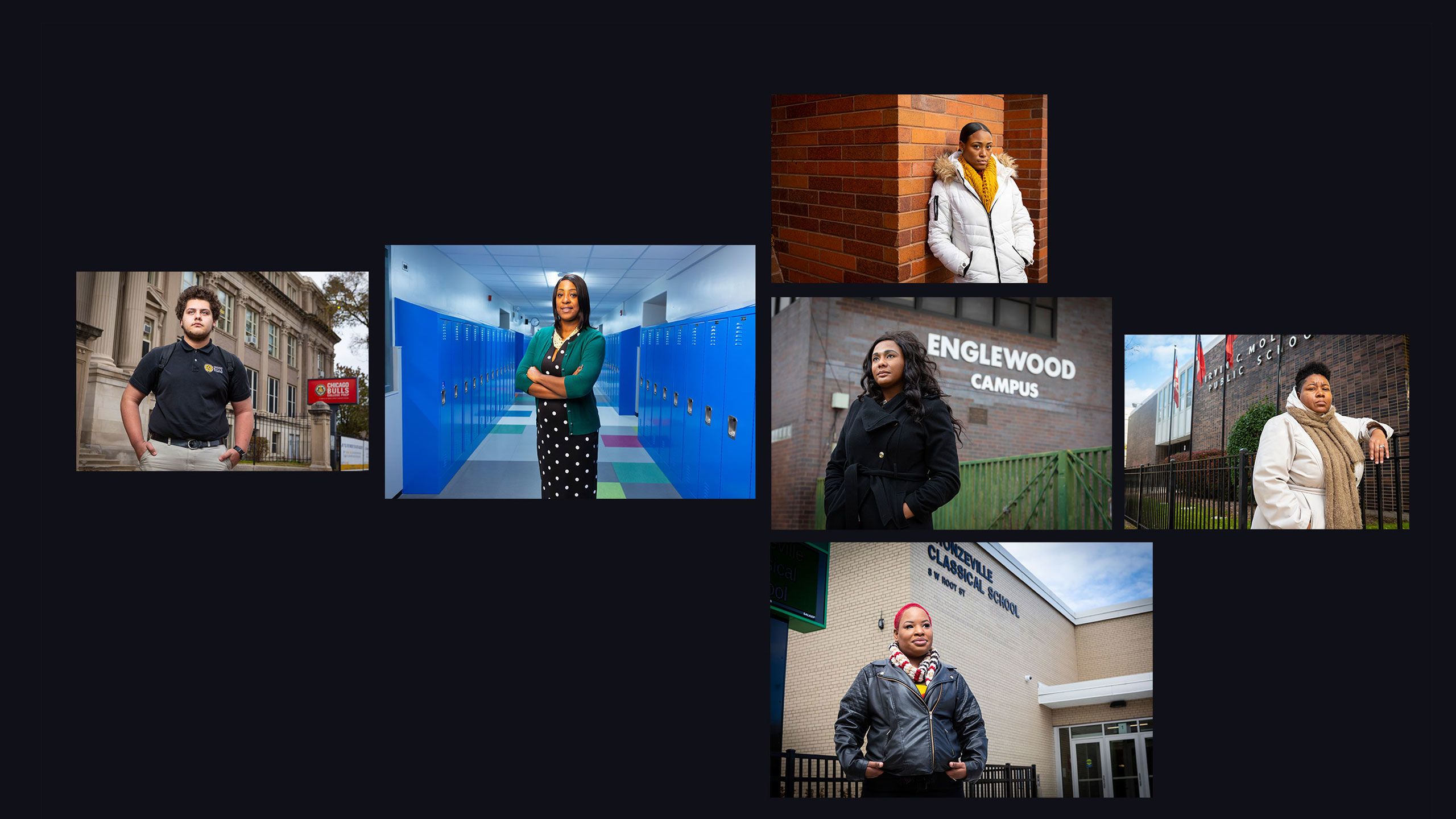
In the time it has taken for a child to grow up in Chicago, city leaders have either closed or radically shaken up some 200 public schools — nearly a third of the entire district — a comprehensive new tally by WBEZ finds.
These decisions, defended as the best and only way to improve chronically low-performing schools or deal with serious under-enrollment, have meant 70,160 children — the vast majority of them black — have seen their schools closed or all staff in them fired.
That's more than all of the students and schools in Boston.
This is the first time numbers have been compiled for the nearly 17-year period — a generation of school closings.
The story of this staggering number of school shakeups — and children who lived through them — began in 2002.
That spring, Chicago Public Schools announced it would close three elementary schools.
Daniel Hale Williams and Mary C. Terrell both sat along State Street on the South Side, near public housing the city was razing. Mary Mapes Dodge was on the West Side.
The closings represented a new, radical thinking about underperforming and under-enrolled schools: There are some schools so broken they cannot be fixed. The idea was to close them and replace them with new “renaissance” schools that promised something better.
And Chicago has done that again and again, opening in the same time period almost the same number of schools it has closed — 193.
More than half the city’s current high schools were created over the last 17 years.
The strategy of closing schools and opening new ones in their place has spurred the creation of some of the city’s most successful schools — and backers insist — an era of dramatic improvement. It has also torn neighborhoods apart and, opponents say, traumatized many of the kids and families it was designed to help.
Loading...
Whether the approach continues will likely be up to Chicago’s next mayor, and proposals from candidates include everything from reopening closed schools to potentially shuttering more.
After nearly two decades, the school system is still confronting the same two problems that prompted it to begin shuttering schools in the first place. It still struggles with chronically low-performing schools. And despite the pain and protests that accompanied so many school closings, the system has a more dramatic under-enrollment problem today than it did when it started shutting down schools in 2002.
Loading...
Chicago’s opening of 193 schools came as the student population was declining, a problem that has only accelerated since the closing of 50 schools in 2013 — the largest intentional mass closings in recent U.S. history. Since then, Chicago Public Schools has lost another 42,000 students, enough to fill 70 average-sized schools.
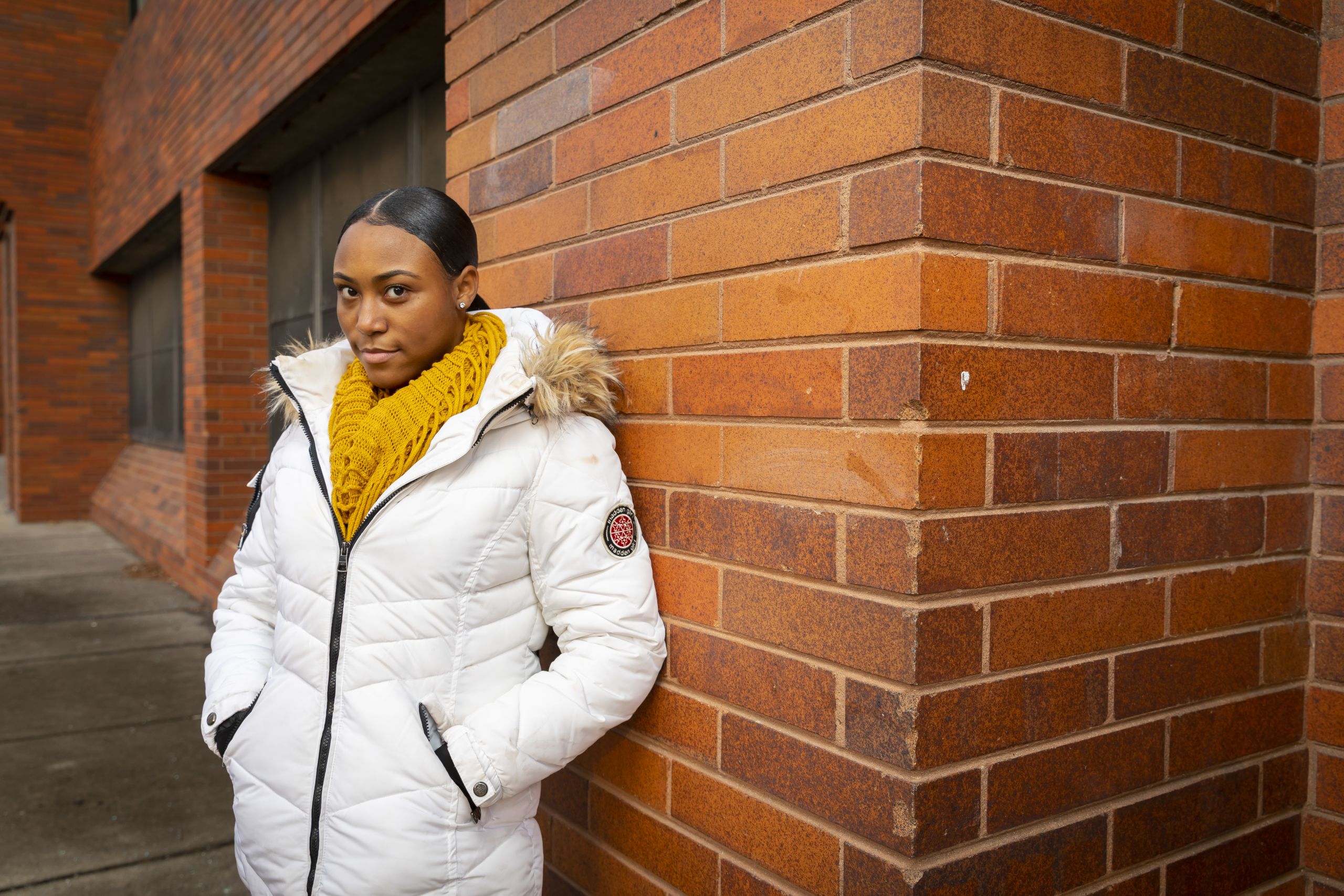
"They blamed it on us, because 'kids didn’t want to go to the school.' But it's your fault, because you’re supposed to make the school interesting for students to come."
Miracle Boyd attended Hope High School, which began phasing out this fall.

'It’s time to start over'
Williams, Terrell and Dodge had been on probation for years. Less than 14 percent of students met national norms on standardized exams. Students don’t have another shot at their education, CPS officials argued.
"We don't believe these schools as they currently exist will ever measure up," Schools Chief Arne Duncan said at the time. "There are better education alternatives within walking distance."
Duncan would go on to become U.S. secretary of education, expanding the notion of drastic school shakeups to the nation.
The day they found out their schools were closing, tears streaked kids’ faces at Williams, Terrell and Dodge. Protests followed. Parents filed lawsuits.
Two years later, in 2004, Mayor Richard M. Daley announced a massive expansion of the strategy, promising to open 100 new schools over the next six years. There would also be closings, he warned.
"Some schools have underperformed year after year. We must face the reality that for some schools that have consistently underperformed, it is time to start over," Daley said at the City Club of Chicago announcement.
Daley’s Renaissance 2010 program ended eight years ago, but the policy of closing schools for poor performance or low enrollment has continued. Under this "portfolio" model of school reform, Chicago manages neighborhood schools and charter schools like a stock portfolio — constantly opening new schools and closing “failing” ones.
When Mayor Rahm Emanuel moved to close 50 under-enrolled schools in 2013, he justified the closings in the same moral terms Daley and Duncan had.
“Locking kids into a system and a school that year in and year out is failing their full potential, that to me is unacceptable. It is unacceptable for those children and it is unacceptable for the city.”
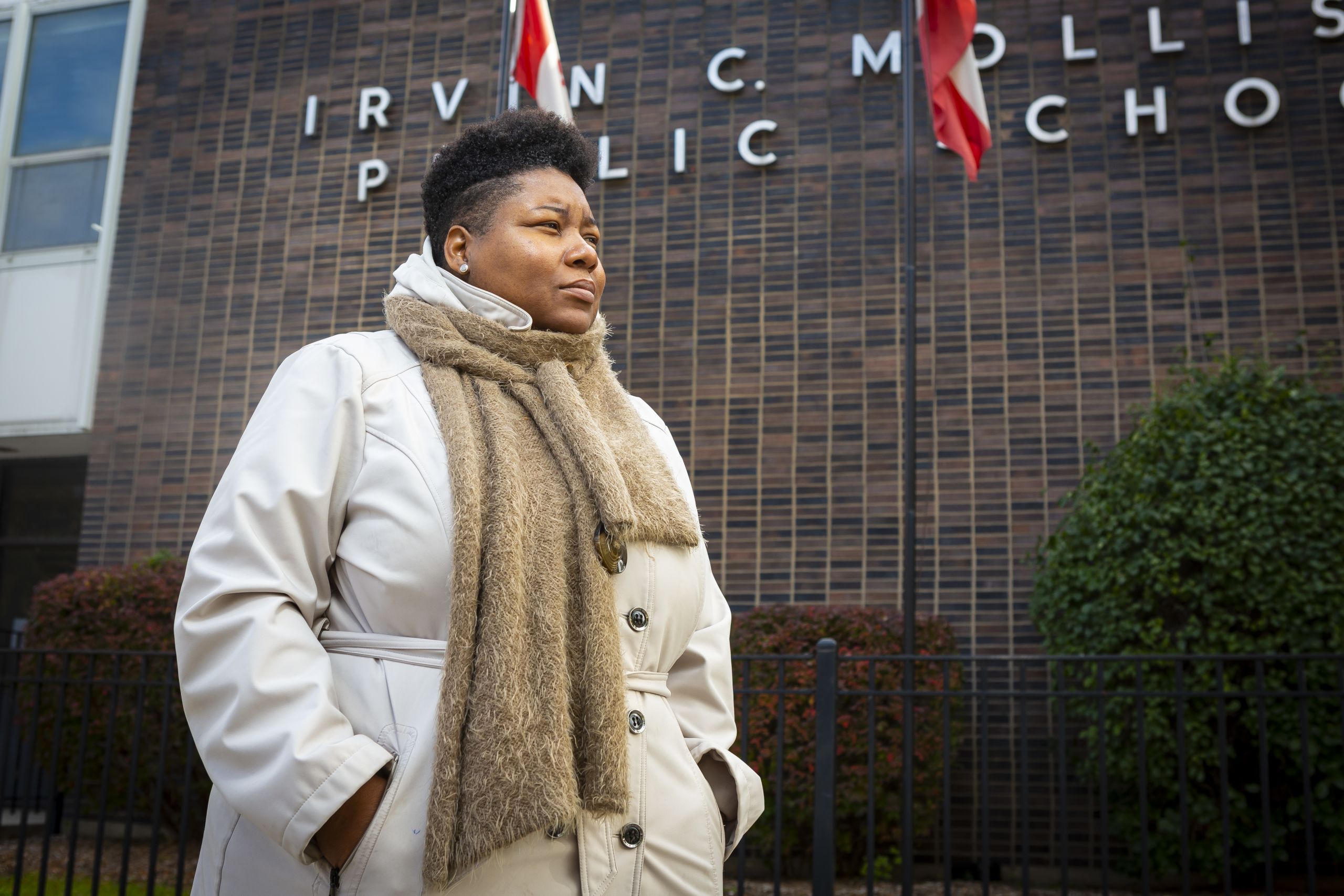
"We all know what great schools look like; they're just not a priority in black and brown communities."
Jeanette Taylor’s children go to a school that absorbed students from a school that closed.

61,420 black children affected
The number of children who have lived through a Chicago school closing since 2002 is jaw dropping, and the impact on the black community in particular has been profound.
A total of 70,160 Chicago students have experienced either a school closing or a total re-staffing of their school firsthand; of those, 88 percent are black. That’s a wildly disproportionate number.
“It’s heartbreaking,” said Eve Ewing, a sociologist at the University of Chicago whose recent book examines the 2013 school closings in Bronzeville and their impact on the African-American community.
Ewing said the “astronomical” numbers show school closings have “actually become part of the fabric of blackness in Chicago for many people.” She said school closings play into social instability, “and the fact that so many black Chicagoans feel like this city is not a stable or a safe place to stay — and are leaving.”
Many children who lived through a school closing also found themselves at the center of the city’s overhaul of public housing. Teacher Cynthia Wolski taught at Hartigan School when the nearby Robert Taylor Homes were being demolished. She could see the wrecking ball from the classroom window. “The children would literally be watching their homes being destroyed. It was hugely traumatic.” Hartigan was closed in 2004.
Loading...
Some 7,368 Latino children also have lived through a school shakeup. Meanwhile, white students have been nearly untouched. In almost 17 years, just 533 white students have experienced a closing.
The figures count only students enrolled in schools when the Chicago Board of Education voted to close or completely re-staff them — a CPS strategy known as “turnaround” in which all staff is fired, including the principal, teachers, even janitors and lunch ladies. Only a handful were ever hired back.
The long-term fallout from school closings continues to haunt students and impact remaining schools that have had to absorb large numbers of students from closed schools.
Visit nearly any predominantly black high school in Chicago and you won’t have any trouble finding students who’ve lived through school closings. On a recent morning in a criminal justice class at Legal Prep Charter Academy on the city’s West Side — one of Chicago’s new schools, opened in 2012 — kids rattled off the school closings they’d experienced firsthand: Piccolo, Delano, Paderewski, Catalyst-Howland Charter, Marconi, Bethune, Lafayette. More than 40 percent of students in the class had lived through closings.
Junior Kahiyani Franklin describes the closing of her grammar school as “disrespectful and rude to our community.” The impact on her family goes beyond academics; her aunt had to give up her job when Paderewski closed to shuttle her kids on the CTA to their new school.
Classmates said they were left with a long-term sense of powerlessness after protests to keep their schools open failed. Some blamed themselves for their schools’ demise, feeling their performance on tests led to the closings. And closings have pushed them to see schools not as community institutions, but more as businesses: here one day, gone the next.
And while city leaders have often justified closings with promises of better education, two research reports have suggested that school closings have harmful effects for children who go through them. The most recent, an analysis of the 2013 closings, found “closing schools caused large disruptions without clear benefits for students.”
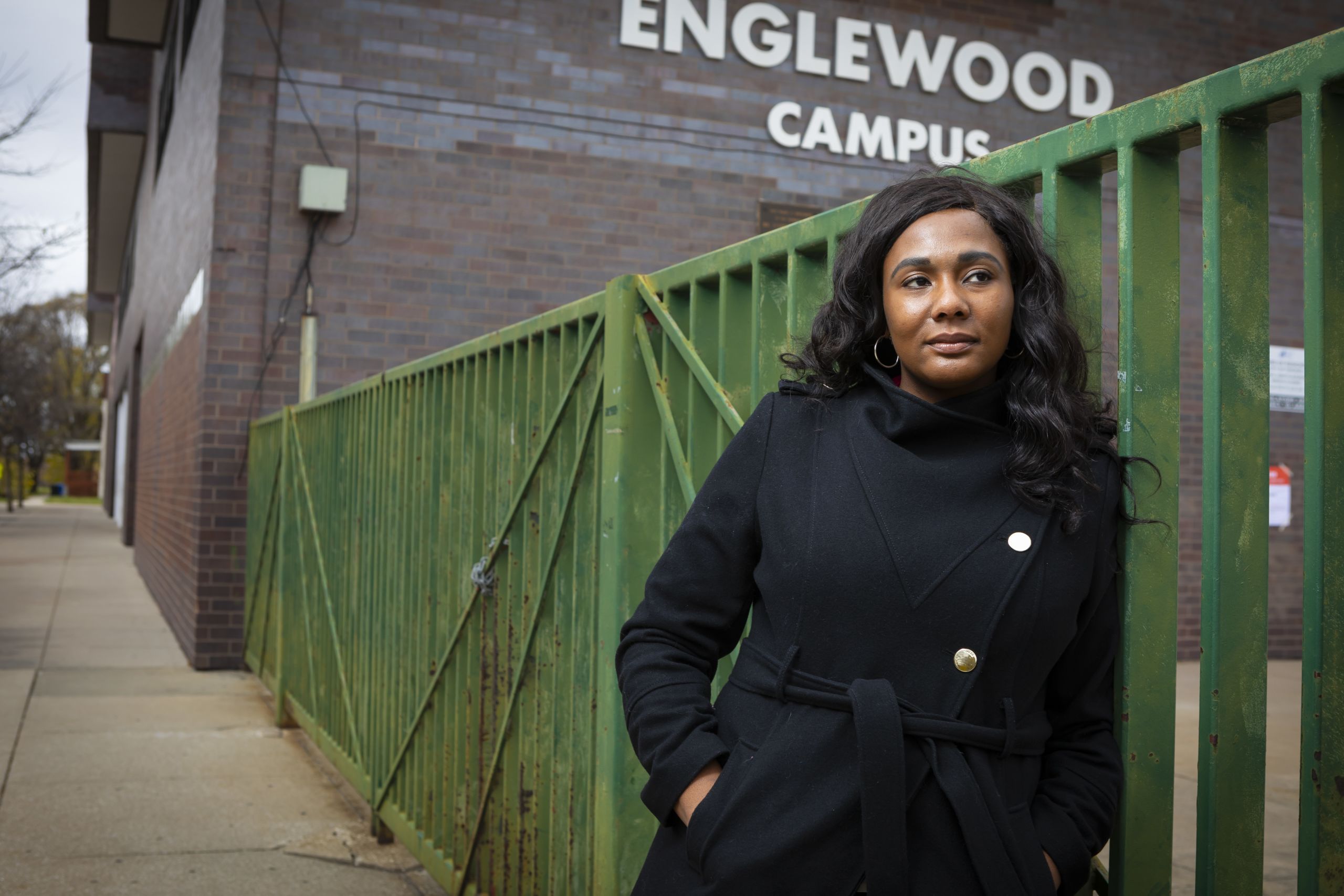
"My goal ... is to hopefully motivate students … to speak out and be a part of the decisions being made that are going to affect their lives."
Latoyia Kimbrough was a student at Englewood High School when CPS voted to close it in 2005. She’s now an attorney working for the Chicago Teachers Union.

Uncertain future, even for new schools
Tim King remembers agreeing wholeheartedly with the school district’s thinking about school closures.
“If a school is not able to be successful, then the school should go away,” King remembers thinking when Renaissance 2010 kicked off. He was head of an all-boys Catholic high school on the South Side at the time, Hales Franciscan. He had no tolerance for the low test scores and graduation rates the district was posting.
“We were always of the mind that, ‘The district is screwing up when it comes to black boys, and let’s figure out how we can do something better.’”
King wanted to offer his all-boys education to families who couldn’t afford private school.
So he opened Urban Prep Charter School in the old Englewood High School building, which was phased out for low performance beginning in 2005. Another new “renaissance” school shared the building as well, TEAM Englewood.
At their start, both Urban Prep and TEAM were flush with students and start-up funds, which bought librarians, technology coordinators, and extra teachers.
But as the years ticked by, it became harder to recruit students. For one, CPS continued opening new high schools nearby, even though enrollment was starting to drop, with black families leaving Chicago.
Fewer students were spread among more schools. At TEAM, that meant austerity budgets — no more money for the extras that had originally defined the school. TEAM Englewood’s enrollment shriveled. And this year, the school closed.
Of the 193 schools opened in Chicago since 2002, 36 have been closed for failing to meet academic muster or attract enough students — that’s 19 percent of all new renaissance schools. In other words, one in five schools Chicago opened in hopes of creating better options has been shut down for essentially the same reasons as those before: low test scores, failure to show quick enough improvement, too few students enrolled.
This includes several renaissance schools that replaced the first three schools Chicago shuttered in 2002 — the closures that kicked off the city’s era of school shakeups.
Loading...
King says two decades ago he would have applauded the closing of TEAM Englewood. On paper, it was poor-performing and failed to attract students, a loser in the new competitive marketplace. But up close, watching the death of TEAM and seeing the challenges Urban Prep has faced, “my view on this has actually evolved over the years,” King said.
He knows firsthand how hard it is to work with students living in deep poverty. His students face hunger. Twenty-nine have been shot over the years across the three campuses Urban Prep now runs; 13 have been killed.
“How a school deals with the level of violence — it will never show up on test scores. Yet those kids were coming to school, those kids were part of a community, those kids were still interested and eager to learn,” King said.
He also questions why city leaders would open so many schools so near each other. “Anyone really thinking about demographics and planning long term would have realized it wasn’t the best thing to do,” he said.
Just a decade ago, Urban Prep and TEAM were Chicago’s hope, the city’s “renaissance” schools. And both helped graduate more students and send them to college than the school they replaced, though all high schools have improved in those categories.
Today, King knows Urban Prep’s future is not guaranteed. Enrollment continues to decline. And next year, Urban Prep will be competing with a new $80 million high school being built just eight blocks away. Four under-enrolled high schools in the Englewood neighborhood were closed to make way for it.
New schools include top performers
Chicago’s aggressive opening of schools has created some of the city’s highest-scoring schools — including “selective enrollment” schools that students must test into. Of the 20 Chicago high schools with the best SAT scores, 11 were created after 2002.
Many of those on the list are part of the Noble Network of Charter Schools, which doesn’t require kids to test in. In 2016, Noble was named one of the best charter networks in the country.
When Chicago began opening schools as a strategy to improve education, Noble had a single campus. Now, the nonprofit, with its private board of directors, operates like a school district within CPS, running 18 campuses with 12,000 students. There are no neighborhood attendance boundaries, and tuition is free because charter schools are paid for with public school funds. At campuses where demand outstrips supply, Noble holds a lottery.
Noble was founded by former public high school teacher Michael Milkie, who — like Tim King at Urban Prep — felt he could create better schools with the flexibility charters offered around discipline, the length of the school day, and the teachers he selected. Noble quickly became a shining star locally, raking in praise and private donations from some of Chicago’s most powerful business and political leaders.
“[Parents are] attracted because they feel it’s safe, because they know the college enrollment chances are much greater,” Milkie said in a 2012 interview. Milkie recently announced he was retiring after admitting he acted inappropriately with women affiliated with Noble, raising questions about the future direction of the charter network.
For parent Maria Tarin, Noble has been a godsend. She has 10 children, and while her older kids got into the city’s prestigious test-in schools, she needed an option for all her children. She would not consider her neighborhood school, Gage Park. “The turnover in teachers, a lot of danger around for different reasons, and there was no other options,” Tarin said.
Then she discovered Noble. It was a school focused on discipline and structure. And she appreciated Noble’s focus on getting students to and through college. Since then, she’s sent five kids across town to the Bulls campus, which scores in the top 15 percent of all schools in the city.
Noble schools have faced criticism for excessive discipline and fees charged to kids who break the rules or fail classes. They’ve been accused of setting up systems that keep out Chicago’s most troubled kids, or push them out once they’re admitted, charges Noble denies. But advocates say school choice is about finding a school that fits — kids who don’t like Noble can choose someplace else
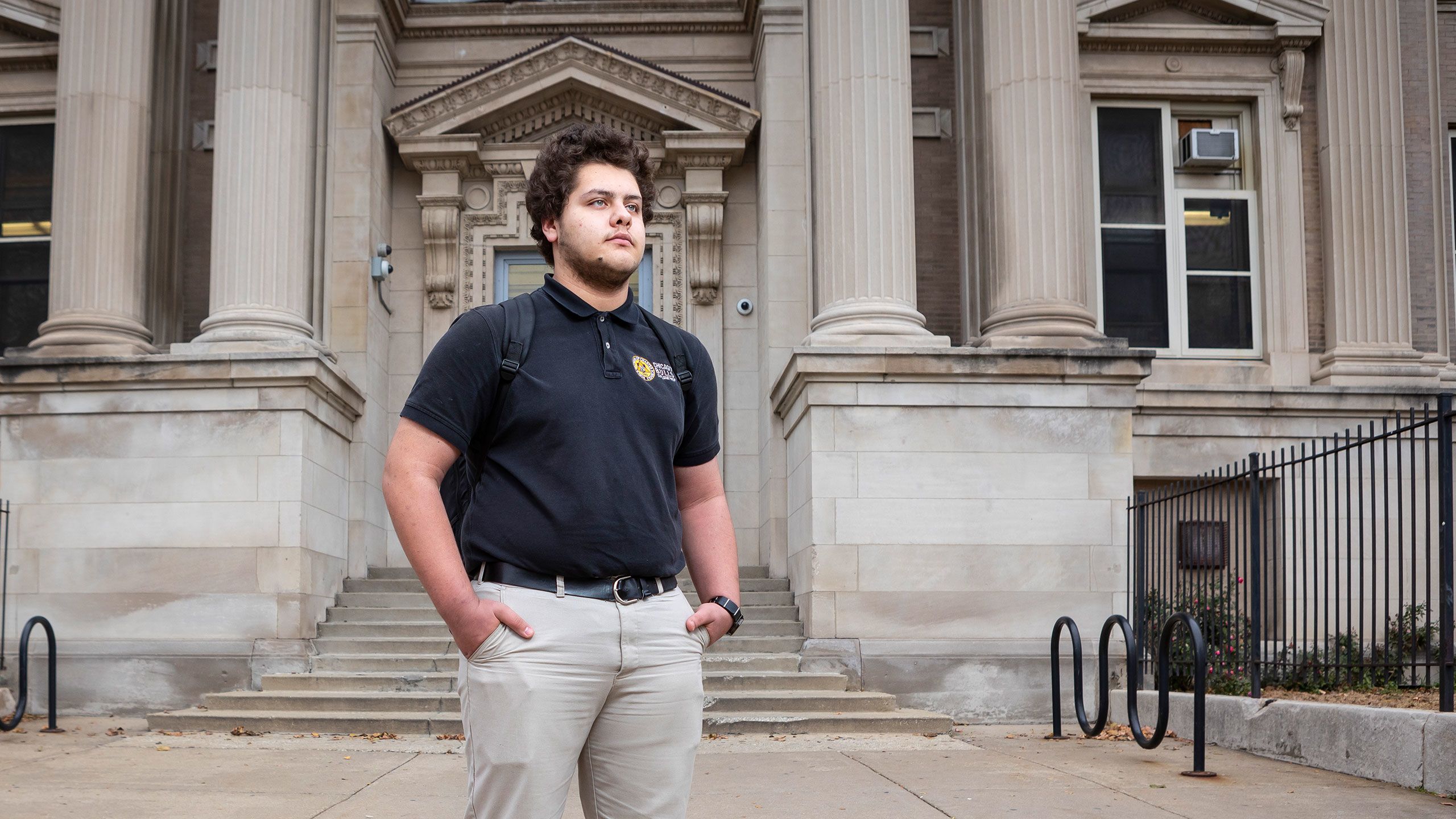
"Bulls is really far ahead with education and teaching you the right stuff ... The way they’re making us act and the rules .... it's going to help us big time."
Omar Tarin is a senior at Chicago Bulls College Prep, part of the Noble Network of Charter Schools.

The legacy of school closings
As Noble has expanded, its success has been uneven, with schools in African-American neighborhoods hardest hit by poverty and violence failing to post scores as high as those in Latino neighborhoods. And while Chicago has created more top-performing schools, low-income black children — those targeted by CPS’ renaissance reform strategy and most affected by closings — are the least likely to attend high-performing schools.
In addition, two dozen school buildings have lived through multiple school shakeups; all but one have been in historically African-American communities.
Loading...
At the same time, achievement in Chicago Public Schools is up; researchers have found CPS elementary kids advance more in a school year than most kids in the country, and they do better than their peers in Illinois when comparing similar kids. Graduation rates are also up. But even supporters of Chicago’s renaissance strategy admit they can’t sort out what impact the approach has had.
“You look at those long-term trends, and I think creating better options (was) a piece of the answer,” along with expanded preschool and better teaching, former Schools CEO Duncan said recently.
Duncan downplays school closings. “We opened a lot more schools than we closed, which somehow gets lost in the translation, and tried to create much, much better options for those kids and for the community.”
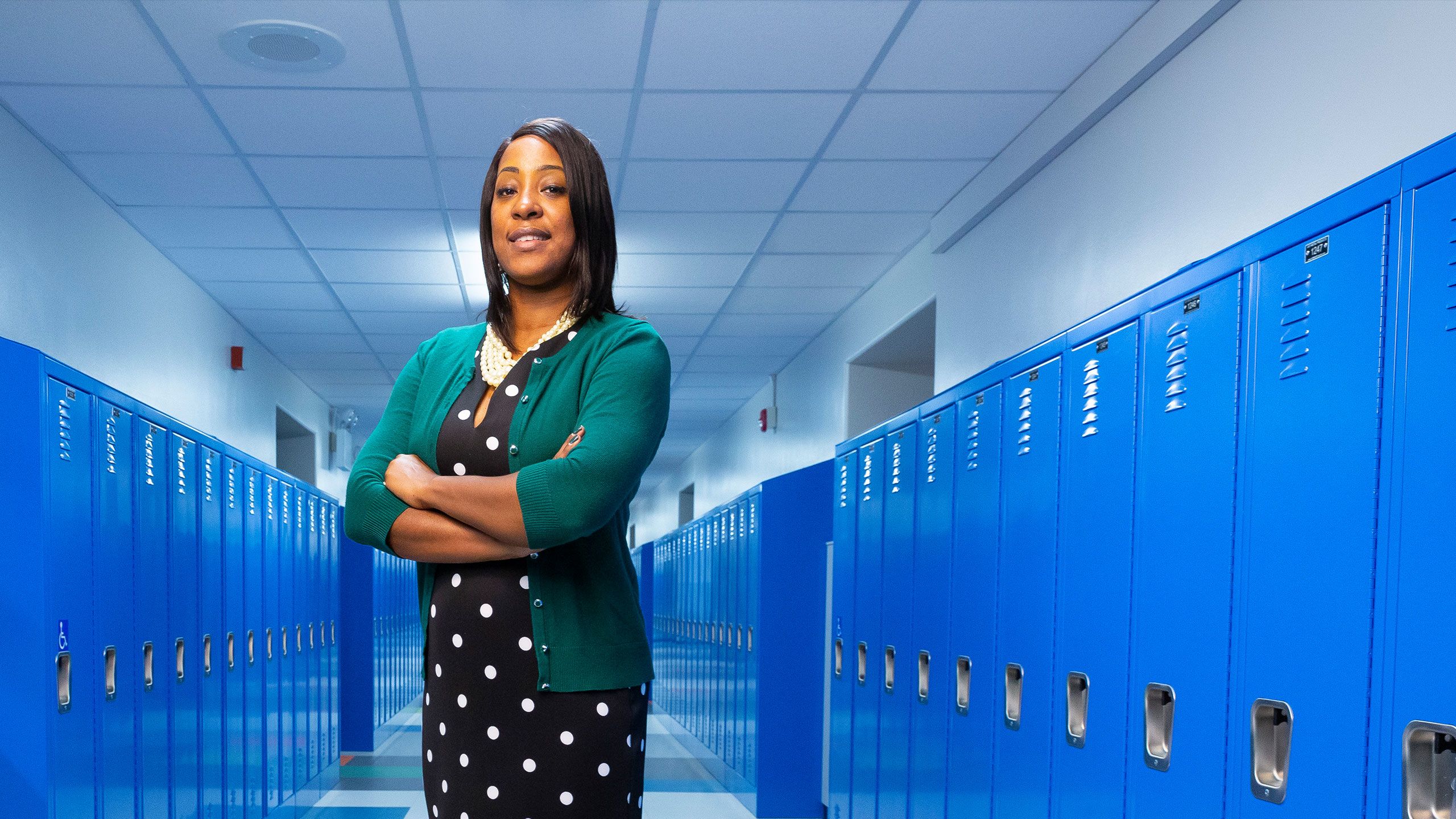
"School closings did have an impact on our communities … However I think that was the catalyst we needed to re-energize our communities."
Nicole Cavin Spicer is principal of Bronzeville Classical School, a test-in school that opened this fall in a building that has housed three different schools since 2002.

Opponents of school closings say shuttering schools has accelerated black flight from the city, but there’s no straight line between those two phenomena either. There are 92,300 fewer African-American students in CPS today than there were in 2002.
And to the core question of whether school shakeups made a difference for the students they were meant to help at chronically low-performing schools, there is no easy answer.
The city still considers 10 percent of district-run schools so low performing they need “intensive support,” though it considers nearly 80 percent to be in “good standing.” That’s a much rosier picture than in 2002, but both the tests used to evaluate students and the accountability systems used to evaluate schools have changed dramatically, making comparisons fraught. And even if it were possible to compare to 2002, it’s impossible to say what’s behind any improvement.
Whether the city’s strategy of closing low-performing schools and opening new ones has improved education also depends on what you consider the role of schools to be.
Back in 2002, when Chicago was shutting down Williams, Terrell, and Dodge schools, the U.S. Secretary of education at the time, Ron Paige, was supportive, saying, “Schools exist for one reason: student achievement.”
But through 17 years of closings, communities consistently have pushed back against that narrow definition — they’ve argued schools are community anchors and serve social and community purposes in addition to academics, and they’ve challenged the idea their schools are “failing.”
“That was home, you felt like family,” Rosetta Simmons said recently. Her South Side grammar school, Edward Hartigan, was closed in 2004. She and classmates she’s still in touch with lament that to this day, 14 years later.
As an adult, Simmons felt so connected to the old Hartigan building that she enrolled her own children in the new iteration of the school, Bronzeville Lighthouse Charter School.
But two years ago, Chicago Public Schools closed Bronzeville Lighthouse for poor academic performance. Simmons has now lived through two closings in the same building — first as a child, then as a parent.
Today, there’s another new school inside Hartigan. Bronzeville Classical Elementary opened this fall. It admits students based on test scores, meaning it’s all but guaranteed the school will never again be considered low-performing. It also enrolls far fewer low-income black students than Hartigan or Bronzeville Lighthouse.
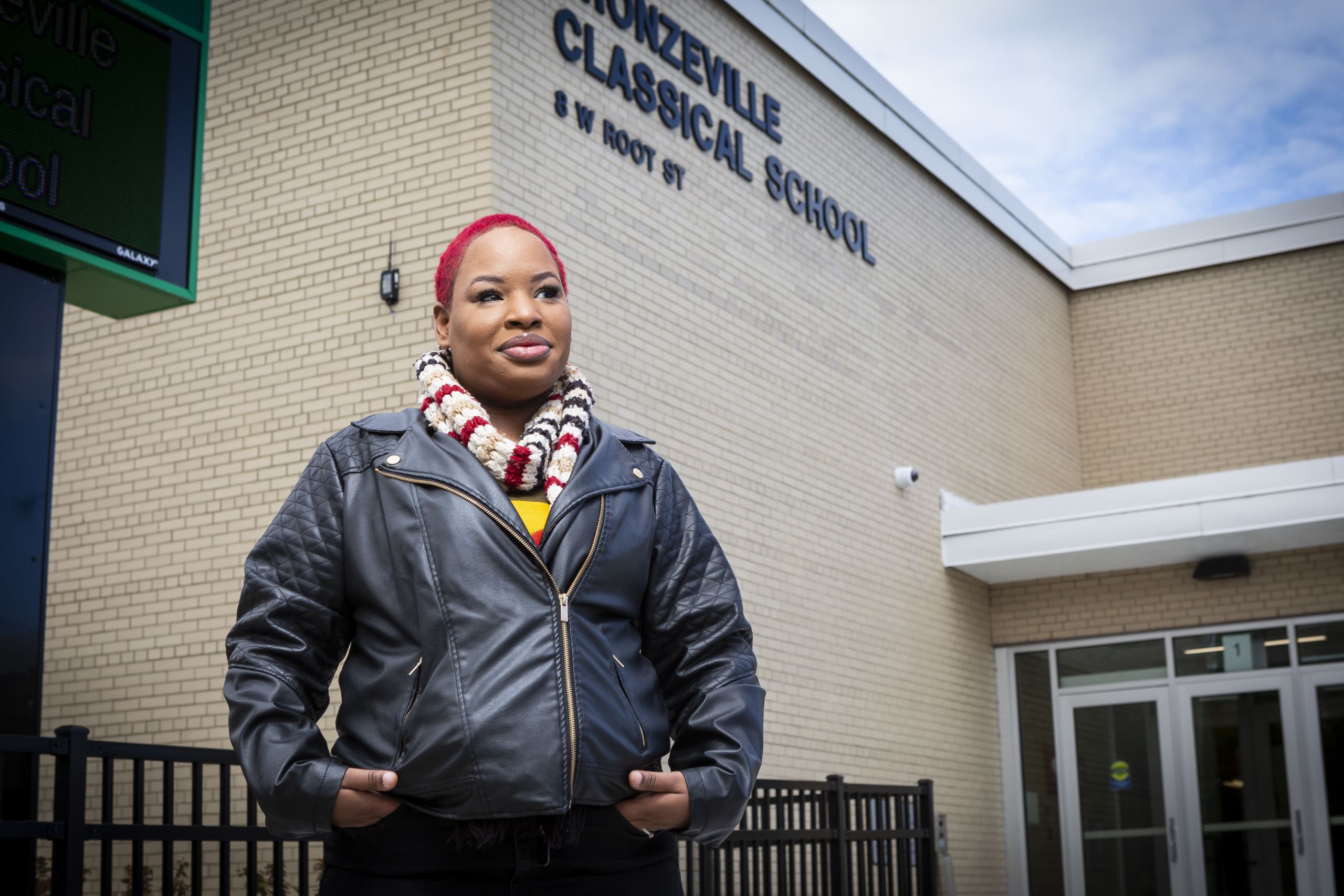
"The community was just one family and when the school closed and the building shut down, it shut down our family."
Rosetta Simmons' elementary school closed in 2004; the replacement school where she later sent her children closed as well.

In September, Mayor Rahm Emanuel cut the ribbon at Bronzeville Classical to inaugurate the new school. Just a few hours later, he announced he would not run for another term.
School closings have already been dominant issue in Chicago politics. Until she was diagnosed with cancer, Karen Lewis, the former Chicago Teachers Union president who rose to power within the union by railing against school closings, was considering a run for mayor against Rahm Emanuel in 2015.
In the 2019 mayoral race, candidates are already weighing in on school closings — and it’s obvious the city’s next mayor faces an under-enrollment crisis. Chicago has more under-enrolled schools today than it did in 2013, before it closed 50 underutilized schools. It’s been losing 10,000 children annually for the last several years.
That leaves the city and Chicago’s next mayor to wrestle with the question a generation of school shakeups raises: Do the positives that might flow from closing and opening schools outweigh the negatives, and should the city continue shaking up its schools to improve them.
After publication of this story WBEZ learned of three additional CPS schools openings. The text and graphics are updated to reflect a total of 193 school openings since 2003.
Photography by Manuel Martinez. Graphics and digital production by Paula Friedrich.
WBEZ schools shakeup analysis
WBEZ tallied every school opening, closing, re-staffing, and phaseout that took place between the 2001-02 and 2018-19 school years and compiled the information in a spreadsheet. We verified shakeups and openings with records from Chicago Public Schools, the Public Building Commission of Chicago, and news reports. WBEZ's data can be found here, along with a full definition of terms used.
Follow our WBEZ education reporting on Twitter at @WBEZeducation.

